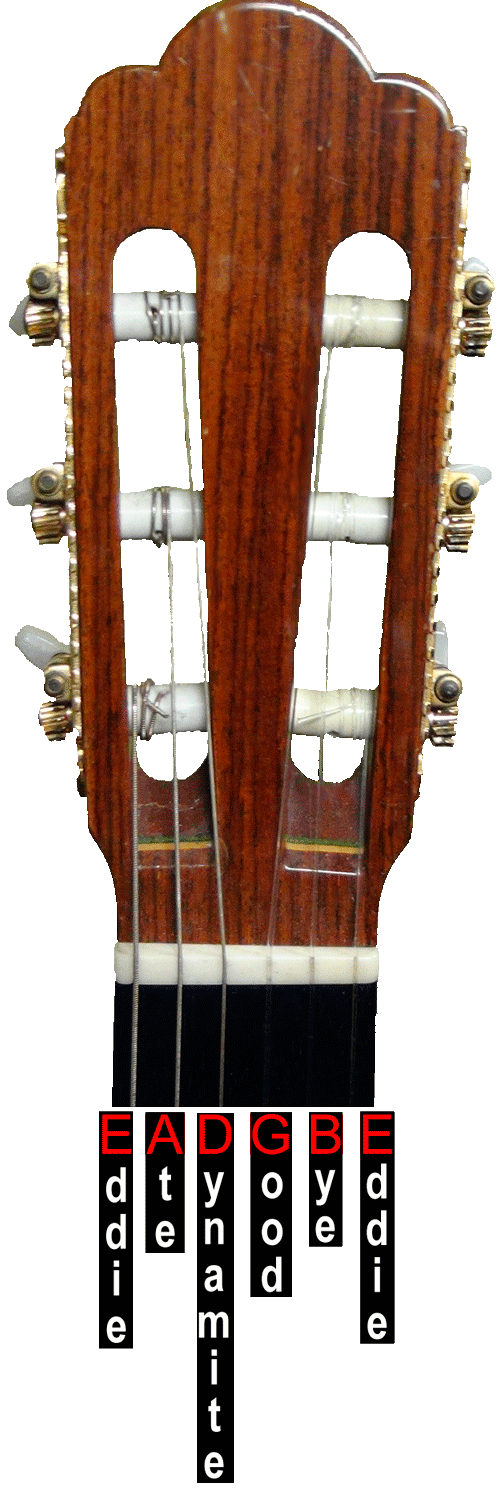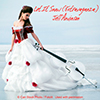
How to Choose Your First Electronic Guitar Tuner
If you type the phrase "electronic tuner" into a search engine or at a favorite online retailer, you might get pages and pages of results. Your local music shop may have lots of different tuners too. How do you choose the best one for you? I wrote this web article to help you understand some of the most common features. I'll end with a suggestion on a specific brand that I've found works well.
Features
Let's start out with cheap and simple. A basic tuner will just tune a guitar to standard tuning. The pitches of a guitar tuned in the standard way are - starting from the biggest string to the thinnest string - E A D G B E. If you want a cheap and simple tuner get one that helps you tune just those six notes. (To help you remember those notes, use this phrase that I learned from one of my students: "Eddie Ate Dynamite. Good Bye Eddie".) This basic type of tuner will only tune a guitar to standard tuning. It can only be used for this single purpose.
One step up from this basic tuner would be one that is "chromatic". Chromatic means that it can tune any of the twelve different pitches found in music: A, A#/Bb, B, C, C#/Db, D, D#/Eb, E, F, F#/Gb, G, and G#/Ab. (These notes can be spelled in other ways too, but let's not get that complicated, OK?) ;-)
Unless you really want to go the cheap and basic route, I'd spring the few extra bucks it takes to get a chromatic tuner. Here's why. If you stick with guitar long enough, you will want to tune it in more ways than just the standard way. Plus, a chromatic tuner can tune other instruments too, not just guitar.
Beyond getting a chromatic tuner, there are many options. Some tuners also have a metronome (a device that clicks at variable rates to keep a steady beat) or a pitch generator (it plays a specific pitch). Some tuners are multi-function devices that include complicated metronomes, adjustable pitch standards (in the US it is A=440 Hz), and variable pitch generators. These are great if you plan on doing advanced study in music, but you will have to pay more for them.
Sound Sensing Mechanism
One additional thing you will have to consider is whether to purchase a tuner that senses sound by physical contact, through a microphone, or via an audio jack.
The physical contact ones use a clamping mechanism that temporarily attaches to the guitar. These are great because they are not "fooled" by other noises - like the noise of thousands of your fans at a gig. ;-)
The tuners with a built-in microphone work with any instrument but they get fooled by external noises - like, well, thousands of fans screaming "play Stairway to Heaven". ;-) Most tuners with microphones also have an audio jack that will let you plug in an electronic instrument. When you plug in, the microphone is usually automatically turned off, so you can tune even with a radio blasting in the background.
Which one of these types is best? Well, it depends of course. The tuners that clamp on a guitar are great but they might not attach to a different kind of instrument. Microphones are good because they will work with any instrument but are ineffective if there is background noise - even speaking voices throw them off. The plug-in type will not work with acoustic instruments unless they have built-in sound-sensing electronics (many do).
Ultimate Recommendation
If I had to pick a tuner for a beginning guitar player, my choice would be a "Snark" brand chromatic tuner. (The ones I've seen work via a clamp by sensing vibration). There are a dizzying number of models available, but I'd go with a basic chromatic one. This should cost between $10 and $20. Many of my students have Snark tuners and they seem to work well. There are many other good brands as well so by all means look around. But Snark tuners do the job - plus, think of how much fun it will be to just say the word "Snark" a lot! ;-)
Of course, if money is no object, I'd buy the best one I could afford - probably one of the multi-function ones that includes a chromatic tuner, a metronome, and a pitch generator.
I have tried to explain the most common concerns regarding tuners. Even though I could have gone into much more detail, that would go beyond the scope of this article. Nevertheless, I hope you found it useful.
Jeff Anvinson, owner/operator of JLA Music
Website and most graphics are created inhouse by Jeff Anvinson, Owner/Operator of JLA Music
Some graphics are purchased from Can Stock Photo, used by permission, and are Copyright
© Can Stock Photo
JLA Music takes care not to infringe on anyone's rights. Please contact us at jla@jlamusic.com if you have questions.
Copyright 2023 © Jeffrey L Anvinson




